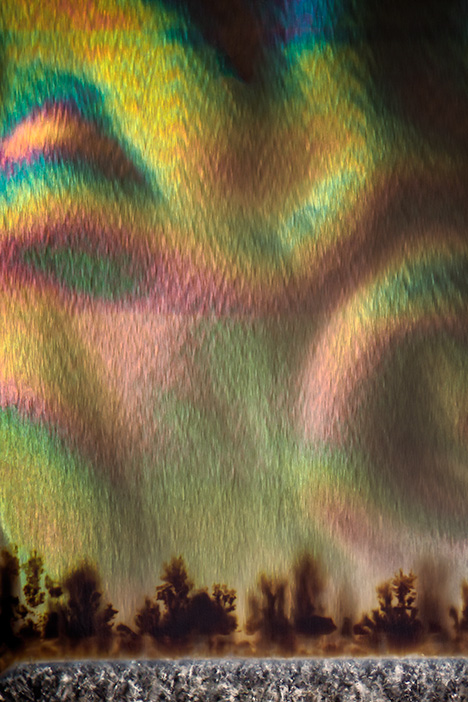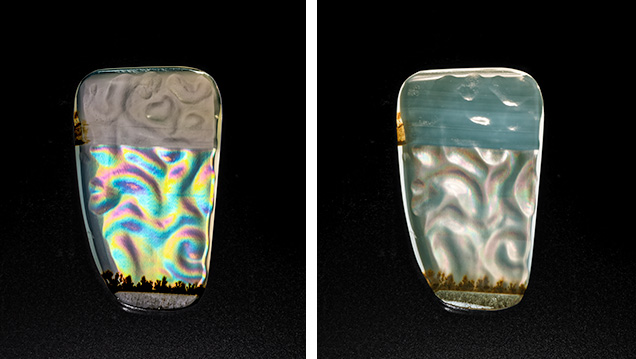Aurora Iris Agate

When solar wind interacts with the earth’s magnetosphere, spectacular multicolor light shows occur. This phenomenon is referred to as an aurora borealis in the Northern Hemisphere and an aurora australis in the Southern Hemisphere. This author recently examined an iris agate that provided a microscopic scene remarkably similar to an aurora (figure 1). The 1.67 ct carving seen in figure 2 was fashioned by Falk Burger (Hard Works, Tucson, Arizona). Burger took advantage of this quartz’s unique growth texture by carving the agate’s back, producing a wispy iridescent effect that is visible when using a point light source. Along the lower portion of the gem was a thin layer of crystalline quartz with a seam of pyrolusite dendrites between the crystalline quartz and microcrystalline iris agate. The combination of these layers gives the viewer the impression of an aurora occurring over a forest-rimmed frozen lake (see video at www.gia.edu/gems-gemology/aurora-iris-agate-carving).




